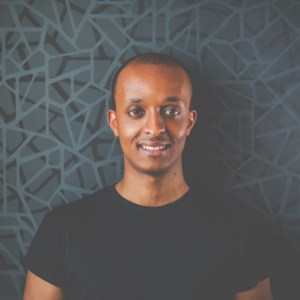PerformanceIN were sitting front row for this year’s Digital Advertising Conference, hosted by independent PPC and digital media agency SearchStar at the Apex Hotels in Bath.
The event, which had speakers from leading tech companies such as Google and Facebook, looked into trends currently shaping the digital advertising space and the impact it would have on advertising performance and campaigns going into 2018 and beyond.
Here’s a wrap up of all the action on the day.
Advertisers embracing AI
Having announced earlier this year that they are now a “AI first company”, ad tech leaders Google were at the forefront of the conference. Jennifer Prior, lead of agency UK, lead the proceedings on the company’s push towards Artificial Intelligence (AI) and Machine Learning while highlighting some of the challenges that advertisers have in connecting with their customers.
With millions of users “living online”, advertisers are spending far too much time on traditional or manual ad tasks, according to Prior, ultimately missing out on critical data and in return decreasing their performance. As Google integrate AI across their internal projects, Prior claimed Machine Learning can do “all the work” for advertisers, saving them 80% of their time to focus on developing audience, creatives and credibility.
“We need to move away from the fear of “man vs machine” and think of AI as machines enabling us to free ourselves to do more,” said Prior to PerformanceIN. You can read our full interview from Prior and Google on AI and Machine Learning here.
Quality over quantity
With Facebook being the world’s leading social platform, David Wilson, head of FMCG strategy touched on how the medium has become a discovery tool, utilising its news feed to ‘push through’ information. From a brand advertiser and user perspective, customers are now discovering products at an exhilarating rate, meaning advertisers need to become “more creative” and not wait for the user’s purchase intent in order to grow.
As so much content is being pushed through, Wilson claimed volume is not the answer – instead, advertisers need to create ads that “stand out, are relevant and remarkable” to their audience. Furthermore, with Wilson citing an average of 2.5 seconds to capture a user’s attention, advertisers need to push their messages through as quickly and efficiently as possible to get the best results, using more trending digital formats such as video and photos.
Finally, Wilson warned on advertisers to look beyond the last click conversion, looking at wider impressions as a source of successful measurement.
Looking beyond search
Paul Morris, global digital director at PZ Cussons added to the day with a talk on the conception of search and how brands should be looking beyond the classic homepage visit and optimising their presence across multiple platforms to reach customers more effectively. Linking search and trust together, Morris proposed the G.O.O.D framework which outlined Gravitas, Openness, Outreach and Distribution while adding credibility, consistency and intimacy in how advertisers should communicate in order to engage more with their online users.
Talking to PerformanceIN, Morris said “trust plays such a crucial role not only in the purchase cycle but in the friend and per group referral, resulting in a win for brands if they move forward with trust.”
Last-click is “thing of the past”
When it comes to attribution, the ‘last-click’ model has become the thing of the past, according to Jon Boon, senior analytics consultant at SearchStar. In order to better analyse user activity online, advertisers need to look beyond conversion rates and instead consider session based views on websites as a source of measurement.
“The key thing is the user, not the session. Don’t assume everyone will convert in one session,” said Boon, adding that It is not a criticism of your website if people are not converting the first time they visit.
Boon also highlighted using multi-channel platforms to attribute conversions with the availability of AI and Machine Learning, touching on Google Attribution due to launch in 2018. For advertisers, this means better and more accurate attribution available on multiple devices to gather as much relevant data as possible.
“When we’re thinking about cross device measurement, think about the role each one has in the journey. Mobile is likely to be at the top of the activity, which means it’s the initial research phase rather than converting media which is key.”
It was was both an eventful and insightful day in Bath, looking at the bigger pictures in digital advertising today and how advertisers should better build on performance, attribution and strategy.





